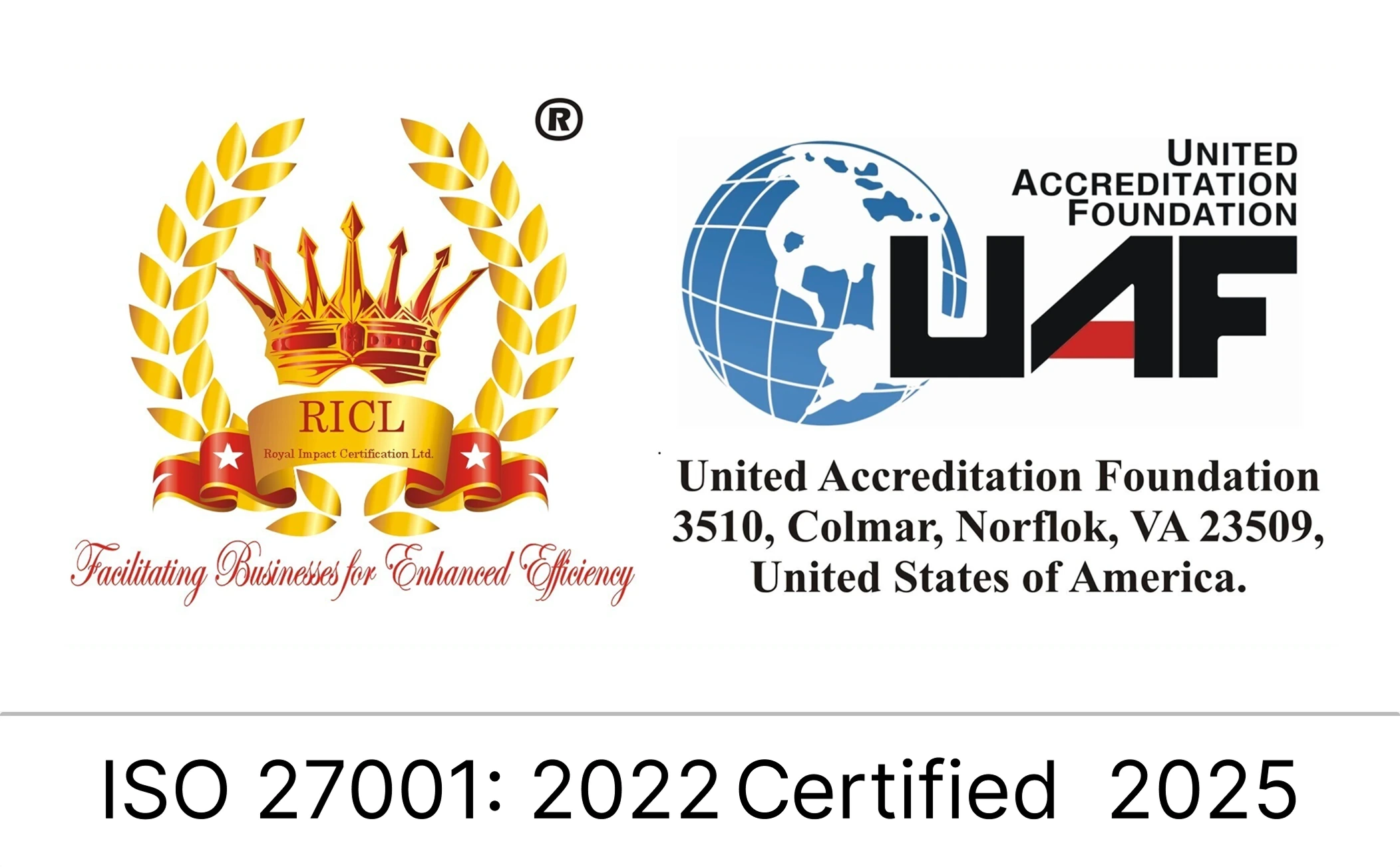Top 5 Reasons to Automate Security Design Reviews Right Now

Every security team knows the drill: before a new system, feature, or architecture goes live, it needs a security design review. But manual security design reviews are a nightmare. They take too long, rely on inconsistent human judgment, and create compliance bottlenecks that frustrate everyone from developers to security teams. Meanwhile, regulations like ISO 27001, PCI DSS, SOC 2, and NIST 800-53 aren’t going away. You need security assessments, but the old way just doesn’t scale.
The problem? Traditional security reviews can’t keep up. The solution? Automation.
Automating your security design reviews streamlines risk assessments, eliminates human error, and guarantees compliance without slowing down innovation.
Here are five reasons why automation is the only way forward.
Table of Contents
- Reason #1: Manual Security Reviews Are Delaying Releases and Increasing Risk
- Reason #2: Manual Security Reviews Are Inconsistent and Unreliable
- Reason #3: Security Reviews Are Delayed Until the Final Stages of Development
- Reason #4: Gathering security evidence for audits is slow and error-prone
- Reason #5: Security Teams Are Stuck in Repetitive and Manual Reviews
Reason #1: Manual Security Reviews Are Delaying Releases and Increasing Risk
Security design reviews are important to find those risks in your application before deployment, but manual processes are inefficient. Reviews often take weeks, requiring back-and-forth discussions, document reviews, and multiple approvals. As development teams push for faster releases, security teams find it hard to keep up. If this is what’s happening in your company, then expect delays, missed deadlines, and a higher risk of non-compliance.
Aside from inefficiency, manual reviews introduce inconsistency. Different reviewers may apply different standards, which will only increase the chance of having holes in your security. And when security is rushed to meet a deadline, critical issues can (and will) slip through, putting the organization at risk.
The Solution: Automate security reviews to eliminate bottlenecks
Automating security design reviews removes inefficiencies and reduces human error. Instead of manually collecting architecture diagrams, threat models, and security requirements, automation tools analyze designs in real-time. This means:
- Reduced review time from weeks to hours.
- Uniform assessments across all projects.
- Catching issues early instead of delaying releases later
With automation, security teams shift from manual documentation reviews to real-time risk analysis, which allows them to focus their time on strategic improvements instead of repetitive tasks that automation can handle.
Compliance impact: Faster and more reliable reviews without the last-minute panic
- Automatically generating security evidence: Every risk assessment, control validation, and security decision is recorded in real time to create a complete audit trail that satisfies compliance requirements.
- Standardizing security assessments: Automated security frameworks ensure that every review follows the same compliance-aligned process, which removes the variability of manual reviews.
- Reducing audit preparation time: Instead of scrambling to gather security documentation before an audit, automated tools provide pre-built compliance reports that are always up to date.
- Ensuring continuous compliance monitoring: Regulations require ongoing security assessments, not just point-in-time checks. Automation allows organizations to validate security controls continuously instead of rushing at the last minute.
- Aligning security reviews with regulatory requirements: Automated security reviews can be configured to check for specific compliance mandates to ensure that every assessment meets the necessary standards (e.g., encryption requirements for PCI DSS or access controls for SOC 2).
If security reviews are slowing you down, automation is the solution. Faster reviews, reduced compliance risk, and seamless integration into development. This is how modern security teams keep up.
Reason #2: Manual Security Reviews Are Inconsistent and Unreliable
Manual security reviews depend on who is running them. One engineer might focus on encryption, another on authentication, and another on misconfigurations. Different reviews produce different outcomes, which creates dangerous gaps in the coverage of your security.
This inconsistency leads to:
- Critical vulnerabilities going unnoticed because different reviewers have different priorities
- Unclear security baselines because of the lack of a standard framework
- Engineers spending hours debating security decisions instead of following a clear and repeatable process
It will be impossible to make sure that every system meets the same security standards when security assessments vary between projects, teams, or engineers. This creates risk, slows down development, and makes compliance more of a challenge than it already is.
The Solution: Automated security reviews ensure consistency and accuracy
Instead of relying on individual judgment, automated frameworks apply standardized security checks across every project. Here’s what it looks like:
- Every review follows the same security policies and best practices.
- Automated tools flag risks instantly, reducing back-and-forth debates.
- Whether reviewing one project or a hundred, automation ensures the same level of security oversight.
Automation does a great job of embedding security into the development workflows of your teams. It makes sure that your very system is evaluated against the same risk criteria.
Compliance impact: Every security review meets regulatory standards
- Eliminating subjective security calls: Automated frameworks apply the same security policies across all reviews to make sure that no critical risks are overlooked.
- Providing real-time compliance checks: Instead of waiting until an audit to assess security gaps, automation continuously verifies that security controls meet regulatory requirements.
- Generating audit-ready documentation: Automated reviews create structured reports that auditors can easily verify and reduce the time spent preparing for compliance assessments.
- Reducing compliance violations: Inconsistent manual reviews increase the risk of non-compliance findings, but with automated reviews, you can rest easy knowing that every system aligns with compliance mandates.
- Supporting evidence-based security: Automation captures security decisions and justifications in real-time, which makes audits smoother and less stressful.
Compliance becomes a continuous process with automation. It also becomes easier for security teams to prove that every system meets regulatory standards, reduces audit fatigue, and minimizes the risk of compliance failures.
Reason #3: Security Reviews Are Delayed Until the Final Stages of Development
Most organizations tend to run security design reviews when development is nearly complete. By that point, vulnerabilities are harder to fix, and security teams are forced into a reactive role, scrambling to assess risks before deployment. This late-stage approach leads to:
- Expensive rework such as rewriting code, redesigning architecture, or delaying releases
- Overlooking critical vulnerabilities
- Delaying the development process, which in turn disrupts schedules and frustrates the engineers.
Security must be integrated early in the Software Development Life Cycle (SDLC) to catch design flaws before they become very expensive problems.
The Solution: Automate security reviews and integrate them into CI/CD pipelines
Security shouldn’t be the final checkpoint of your development process. Instead, your organization should embed automated security design reviews in the architecture phase. Integrating security into CI/CD pipelines will help your teams detect and fix vulnerabilities before they reach production. With automated security design reviews, you can:
- Catch design-level risks before developers start coding.
- Automate check runs continuously to make sure that security is assessed alongside every code challenge.
- Enforce consistent security policies across all applications without slowing down development.
With automated security reviews built into the SDLC, teams fix issues when they’re easy to fix, preventing costly rework and last-minute delays.
Compliance impact: Proactive security eliminates compliance gaps and audit risks
- Reduce last-minute compliance gaps: You’ll typically find gaps in encryption, access controls, logging, and monitoring during late security reviews, all of which are required by compliance frameworks. But if you can find these issues earlier, you can rest easy knowing that your systems are built with security from the ground up rather than patched at the last minute.
- Ensure continuous compliance: Automated design reviews validate security requirements against compliance frameworks in real-time to make sure that every code change, infrastructure update, or system modification meets regulatory expectations without requiring a separate security audit later.
- Generate audit-ready security evidence: Compliance audits require documentation of security decisions, risk assessments, and mitigation strategies. Automated tools log every security check, mapping them directly to regulatory controls (e.g., PCI DSS 3.2.1 requirement 6.3 for secure software development or ISO 27001 A.14 for system security).
- Lower regulatory risk: Proactive security guarantees that systems are built to meet regulatory and industry security baselines (such as SOC 2 security and availability criteria or HIPAA’s Security Rule for data protection). Addressing compliance throughout development will help you reduce the chances of non-compliance findings, failed audits, and potential financial penalties.
Yes, shifting security left is efficient, but more than that, it’s about ensuring security and compliance at every stage of development. And by automating security design review early in the SDLC, you’re also reducing risk, eliminating compliance bottlenecks, and delivering secure applications faster.
Reason #4: Gathering security evidence for audits is slow and error-prone
You need detailed documentation of security controls, risk assessments, and mitigation measures for compliance audits. But in most cases, collecting this evidence is a painful and manual process. Security teams spend weeks digging through spreadsheets, emails, and outdated reports just to prove that security policies were followed. Eventually, this leads to:
- Inconsistent documentation that is hard to compile
- Last-minute scrambling before an audit
- Red flags during audits that increase the risk of compliance violations, fines, or certification failures.
There’s no way you think that your security teams should waste their time manually compiling reports. This process needs to be automated, accurate, and always audit-ready.
The Solution: Automate security reporting with real-time and audit-ready documentation
If you’re tired of manually tracking security decisions and compliance data, you should use automated tools that generate audit-ready reports instantly. These tools capture security findings, mitigations, and risk ratings in real-time to make sure that every security assessment is logged and documented properly. Automated security reporting provides:
- Real-time tracking of security reviews to create a continuous audit trail
- Security evidence that is compiled in a format that aligns with compliance frameworks like ISO 27001, PCI DSS, SOC 2, NIST 800-53, and HIPAA
- Instead of spending weeks gathering security data, teams can generate fully documented compliance reports in minutes.
- Automated tools eliminate the risk of missing or outdated security documentation, which ensures that all records are accurate and up to date.
In short, by automating security reporting, you can lighten the manual load and always have the security evidence needed for audits without the last-minute stress.
Compliance impact: Always be audit-ready without scrambling for documentation
- Continuous compliance monitoring: Security evidence is collected and updated in real-time to keep audits not relying on outdated or incomplete data.
- Pre-mapped compliance reports: Automated tools generate reports that align directly with regulatory controls (e.g., PCI DSS 10.2 for logging and monitoring, ISO 27001 A.12 for operational security, or SOC 2 CC6.1 for access control).
- Instant access to security findings and risk mitigations: Instead of searching through old documents, your teams can pull up risk assessments, security reviews, and mitigations instantly.
- Stronger compliance posture: Auditors see a complete and well-documented security history, reducing the likelihood of compliance gaps or failed audits.
- Elimination of last-minute audit prep: Security teams no longer need to scramble for documentation. Every security review and risk decision is logged automatically to make sure that audit reports are always up to date.
For a lot of organizations, compliance is a manual and painful security process. But with automated security reporting, that is never the case. You can stay audit-ready all the time while reducing compliance risk and eliminating the inefficiencies of manual reporting.
Reason #5: Security Teams Are Stuck in Repetitive and Manual Reviews
Security teams are expected to keep up with fast-moving development cycles while making sure that every system is secure and compliant. But instead of focusing on high-priority risks, they’re drowning in manual design reviews, compliance checklists, and repetitive security assessments. They’re overloaded and create more serious issues:
- Reviews pile up and slow down development because security teams are stretched too thin.
- Mistakes happen and critical risks get overlooked.
- Teams spend more time on routine assessments that could be automated instead of analyzing advanced threats or improving security posture.
- Security professionals are in high demand, and repetitive manual work leads to fatigue and higher turnover rates.
Security teams should be focusing on threat modeling, incident response, and strategic security initiatives, not getting stuck in repetitive and low-value tasks.
The Solution: Automate repetitive security reviews and free up security teams for critical work
Instead of forcing security teams to manually review every system and every change, automation streamlines security design reviews, risk assessments, and compliance checks. Embedding automated security validation into CI/CD pipelines will help you ensure continuous security without slowing down development.
Automating security reviews allows organizations to:
- Automated tools assess risks, flag vulnerabilities, and enforce security policies without waiting for human review.
- Routine checks, compliance validations, and design assessments are handled automatically so that engineers can focus on high-impact security initiatives.
- Automated tools apply security policies consistently across all projects which reduces the risk of missed vulnerabilities or inconsistent enforcement.
- As development accelerates, security doesn’t become a bottleneck because automation keeps pace with code changes and new deployments.
Compliance impact: Stronger compliance without overloading security teams
- Ensuring continuous security validation: Compliance-aligned security checks run automatically, reducing reliance on rushed manual reviews.
- Improving documentation accuracy: Automated tools generate real-time security reports, mapping security assessments directly to regulatory requirements.
- Reducing compliance fatigue: Security teams no longer need to manually track security controls or compile audit evidence, so they can focus on proactive risk management instead of administrative work.
- Minimizing non-compliance risks: Automating compliance checks and enforcing security best practices will help you reduce the risk of audit failures, fines, and certification delays.
- Supporting risk-driven security: With more bandwidth, security teams can focus on business-critical risks, threat intelligence, and attack surface reduction instead of spending time on repetitive compliance tasks.
Automating Security Reviews Ensures Compliance Without Slowing You Down
Automating security design reviews is not only about how fast you can release the next best product. How does accuracy, scalability, and compliance at every stage of development sound to you? Manual reviews are too slow, inconsistent, and prone to human error. As regulations change and development cycles accelerate, security teams need a solution that keeps up without introducing unnecessary bottlenecks.
Whether you like it or not, the future of security compliance is automated, continuous, and fully embedded in the software development lifecycle. So it’s high time that you start embracing automation. They improve security, reduce risk, and keep up with compliance requirements without unnecessary manual effort.
Is this what you’re looking for? If your answer is yes, then you’re in the right place. With SecurityReview.ai, you can eliminate inefficiencies, reduce compliance risk, and make security a seamless part of development. Our AI-driven platform analyzes security policies, architecture diagrams, and compliance frameworks in real time, to provide you with structured and audit-ready reports without the manual effort.
Unlike rigid security tools that slow down development, SecurityReview.ai provides instant, actionable risk insights that fit your workflow so you can ship fast and stay secure without compromise.
See how SecurityReview.ai can cut your security review time by 99%. Book a demo below.
FAQ
What is a security design review, and why is it important?
A security design review is an assessment of an application’s architecture, security controls, and potential risks before deployment. It ensures that security is built into the system from the start, reducing vulnerabilities, meeting compliance requirements (ISO 27001, PCI DSS, SOC 2, NIST 800-53), and preventing costly security issues later.
How does automating security design reviews improve compliance?
Automation ensures that every security review follows a consistent, repeatable process, mapping security controls directly to compliance frameworks. Automated tools generate audit-ready reports in real-time, eliminating the need for manual documentation and reducing the risk of missing critical compliance requirements.
What are the biggest challenges of manual security reviews?
Manual security reviews are slow, inconsistent, and prone to human error. They often rely on subjective assessments, leading to gaps in coverage. Security teams also waste time gathering evidence for audits, which can delay development and increase compliance risk.
How does automated security review software work?
Automated security review tools integrate with your CI/CD pipeline, architecture diagrams, and security policies to continuously analyze risks, flag vulnerabilities, and generate security assessments. These tools apply predefined security rules and compliance standards to ensure real-time security validation without manual effort.
Can automation completely replace manual security reviews?
Not entirely. Automation eliminates repetitive, low-value tasks like compliance mapping and risk scoring, but security teams still need to review high-risk findings, perform deep threat modeling, and make strategic security decisions. The goal is to free security teams from routine work so they can focus on critical risks.
What compliance frameworks support automated security reviews?
Security automation aligns with ISO 27001, PCI DSS, SOC 2, NIST 800-53, HIPAA, FedRAMP, and more. These frameworks require structured security assessments, risk mitigation, and audit-ready documentation—all of which automation enhances by ensuring continuous compliance.
How does automation impact DevSecOps workflows?
Automating security design reviews shifts security left, allowing developers to address security risks early in the software development lifecycle (SDLC). This prevents costly rework, reduces friction between security and development teams, and ensures security is built into applications without slowing down releases.
What should I look for in an automated security design review tool?
A strong automation tool should: Integrate with CI/CD pipelines to catch risks early. Map security findings to compliance frameworks automatically. Provide real-time risk insights and recommendations. Generate structured, audit-ready security reports. Ensure consistency across all security reviews.







.png)
.png)
.png)





